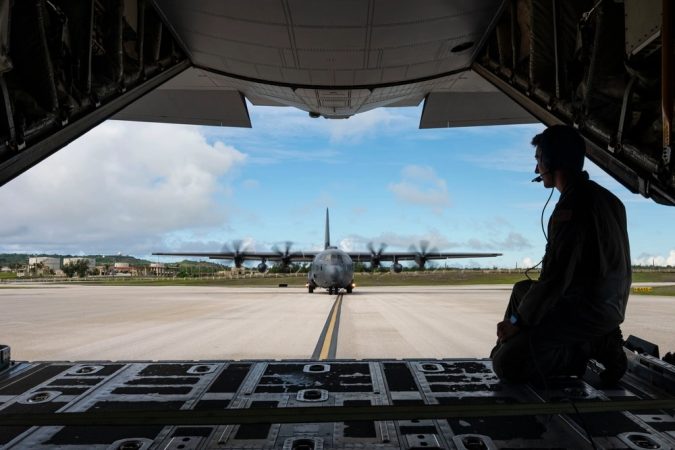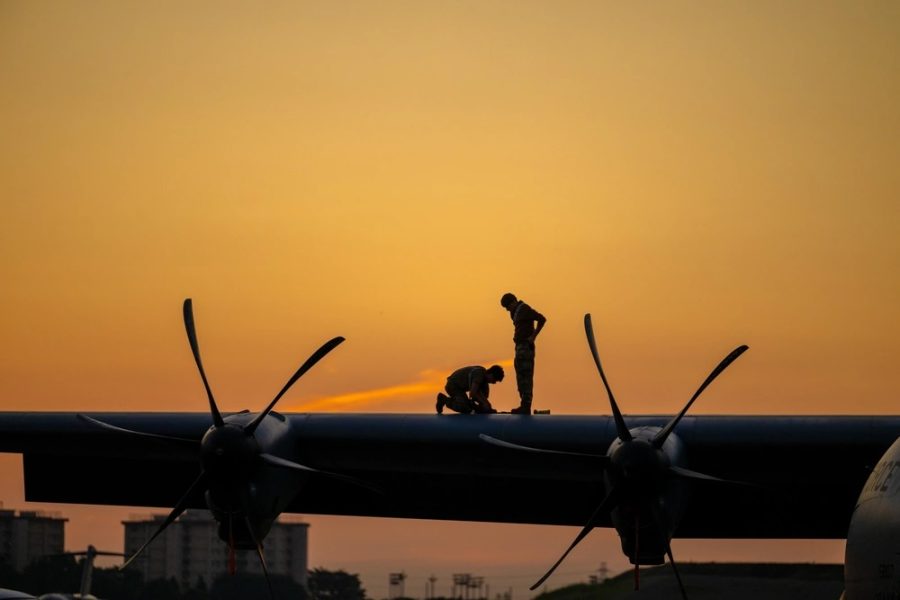NATIONAL HARBOR, Md.—A first-in-a-generation exercise that took place across the Pacific this summer gave top Air Force and Space Force commanders plenty of data and lessons to consider.
The Department-Level Exercise, which actually included five major exercises under one series, featured 12,000 Airmen and Guardians practicing air combat, airlift, aerial refueling, aeromedical evacuation, and other missions from early July to mid-August.
Leaders at AFA’s Air, Space & Cyber Conference said two pressing trends emerged from the sweeping wargame:
- Decision-making power needs to be pushed down to the lowest echelons of command
- Equipment and supplies needed in a conflict must be pre-positioned ahead of time to get troops fighting faster
“There is still a huge demand for stuff to be in position from day one,” Pacific Air Forces commander Gen. Kevin B. Schneider said during a Sept. 24 panel. “With a contested environment, the enemy may not give us the luxury of time, space, or distance to flow stuff at the speed that we want.”
The wargame was a chance for the Air Force and Space Force to practice war at a speed, scale, and range not seen in decades, alongside other U.S. armed forces and America’s foreign allies and partners, as they would if the U.S. goes to war with China.
“The first lesson was: we can do this,” Schneider said. “It was a massive challenge: at times we were operating 50 locations: 5,000 miles north-south, 6,000 miles east-west.”
That scale is simply too big for any one command center to manage at all times, especially if adversaries isolate that center via electronic warfare, cyber attacks, or kinetic strikes such as cruise missiles.
To make the force more flexible and responsive, Schneider and other top generals who oversaw the DLE called for pushing decision-making authorities as far down the chain of command as possible, particularly when it comes to logistics and sustainment.
“We spend a lot of time looking at the [command and control] of fires,” Schneider said. “We need to equally invest time and thought and resources into the command and control of logistics and sustainment to give ourselves the best ability to generate air power.
“With that comes perhaps some doctrinal changes. What are the delegations that I need to give or others need to give, down to the lowest echelons of command, so that they can make the decisions about where the fuel needs to go, where the munitions need to go, how runways need to be repaired … to most effectively generate airpower?”

The person in the best position to make that determination is not necessarily at Pacific Air Forces headquarters in Hawaii, or the co-located 613th Air Operations Center, he added.
“It’s the Air Expeditionary Wing commander at the front edge of the fight who’s dealing with force protection issues, who knows where their stuff is, how to move their disaggregated force around hubs and spokes to reaggregate quickly,” the general said.
Still, he noted it’s a “two-way conversation,” where both the lower-level and higher echelons need to be aware of the risk incurred by delegating those decisions, he said.
Gen. John Lamontagne, the head of Air Mobility Command, saw the benefits of pushing authority down to lower levels for overseeing C-130 transport planes, which operated from regional hubs such as Guam and Japan.
“Instead of holding all our C-130s at a theater level, [Pacific Air Forces and Air Mobility Command] allocated C-130s to Japan and Guam task forces, and found that very, very effective for those commanders that were running those operations,” Lamontagne told reporters at the conference on Sept. 22.
Lt. Gen. David Miller, Jr., the head of Space Operations Command, saw a similar trend for space forces.
“With the level of complexity and scale of this challenge that we face, we are not going to be able to joystick all this from one C2 center, and we are going to have to expect more and more from the tactical-level units of action to execute mission command,” he said at the Sept. 24 panel, where he spoke alongside Schneider, Lamontagne, and Gen. Adrian Spain, the head of Air Combat Command.
Miller recalled at one point during the exercise, a joint operations director requested a Space Force colonel to help out—but Miller had only a captain to spare.
“You’re getting the captain, and that captain did an amazing job,” he said. “We’re going to have to move forward with a level of expectation that we have not had in the past.”
Spain took the same lesson away from exercise Bamboo Eagle, a subset of the DLE where troops from all branches worked together in New Mexico to command and control more than 100 aircraft operating from more than 15 locations from Arkansas to Hawaii.
Spain said the Air Force must continue “to reinforce and foster the mindset that for a period of time, you will be operating under mission command and commander’s intent” if Airmen’s connection from higher echelons is severed.
There is a technology component: Schneider said command and control systems have to be flexible enough to allow partners and allies in and let higher echelons push their abilities down the chain.
“We do this with allies and partners. We do this as a team,” he said. “We cannot build a U.S.-only system, and then try to snap a releasable enclave on the end of it.”

Pre-Positioning
To move large amounts of troops and equipment across the Pacific Ocean in a hurry should conflict occur, Air Mobility Command—and by extension, the entire U.S. military—will rely on C-5 and C-17 transport jets and C-130 planes equipped with large external fuel tanks.
But right now, AMC has just 222 C-17s, 52 C-5s, and 150 or so C-130Js to meet the needs of a potentially massive war with China. The DLE underscored the importance of moving equipment now to free up as much cargo space as possible.
“Everything that we did across the Pacific this summer was enabled by Air Mobility Command,” Schneider said. “We have to be very deliberate and smart about where we put kit, where we put gear, so that units that are falling into their fighting positions are ready to go immediately in that regard.”
Lamontagne echoed the point, saying AMC is already moving several hundred pieces of equipment, including heavy cargo-loading machines, forklifts, tow vehicles, and the equipment used to start up aircraft on the ground into the Pacific so they are ready to go later. Some of that gear comes from excess stock in the continental U.S. and Europe.
“We have an opportunity that we’re actually moving out right now, not waiting for warehouses to be built for storage,” Lamontagne said.
The Hawaii-based 515th Air Mobility Operations Wing can use the gear to keep Air Force transports ticking even if a conflict does not occur.
“There are a lot of challenges in the Pacific with rushed-in equipment. And we have challenges maintaining old airplanes, we’ve got challenges maintaining vehicles in the Pacific,” Lamontagne told reporters. “This lets us refresh that a little bit and provide added capacity.”


